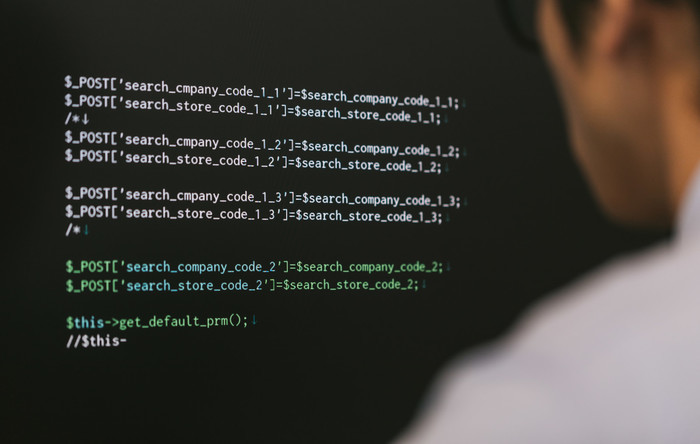What kind of framework is Django?

Django is a web application framework.The code is written in the programming language Python. Therefore, it is used when you want to create a web application in Python.
A framework is software that bundles functions that are often used in application development. By incorporating it into development, it will be possible to develop a wide range of web applications, and you will be able to proceed with your work efficiently.
Django is open source, so anyone can use it for free. It is ideal when you want to improve the work efficiency and productivity of development using Python, or when you want to study practical methods for developing with Python.
What can you create with Django?

Django allows you to create WebAPIs and web applications.There are various things that can be created in web applications, such as sites, social networks, and management systems.
The programming language used, Python, is suitable for all kinds of development, so you can create and develop a wide range of things with Django.
WebAPI
The first thing you can create with Django is WebAPI.The tool cast Django REST framework with the purpose of creating Restful (an interface that calls a web system built on the principle of REST with HTTP) WebAPI is installed, so you can easily create WebAPI.
REST (REpresentational State Transfer) is a set of design principles and ideas that are suitable for software collaboration in distributed systems. By installing and configuring the Django REST framework, it is possible to create a WebAPI based on REST principles.
Web application
The second thing you can create with Django is web applications.You can create various web applications such as news sites that handle a lot of information, social networks that connect to information sites, and systems that manage specific content.
Django supports simple to complex code. If it is simple, it is possible to complete development in a few minutes at the shortest. The creation of complex code is made possible by extensions, and in any case it is possible to create a high-quality web application.
5 things you can do with Django features

With Django, you can create a management screen, authenticate users, create a guide page for your site, set up an RSS feed, and publish static files.These can be created by other means, but when you want to create them in Python, you can use Django to work efficiently.
What you can do with Django 1: Create a management screen
The first thing you can do with Django is to create a management screen.As a full-stack framework, Django comes with basic convenience features right from the start. One of its functions is a management screen, so you can easily create a management screen without preparing a template.
Full-stack means a complete set of features that are essential for web application implementation. Even the so-called frameworks differ in their actual usability due to differences in the functions contained within them. Dango is a set type, making it easy for beginners to handle.
What you can do with Django 2: User authentication is possible
The second thing you can do with Django is user authentication.User authentication is also included as part of the full stack, which is a set of commonly used basic functions. Therefore, you can authenticate users using Python with Django alone without preparing anything else.
Security is also a concern with user authentication, but Django is designed to make security mistakes less likely. For example, security enhancements have been introduced in the location of section information and the method of storing passwords.
Regarding session information, only the session key is stored in the cookie, and the session data itself is stored in the server database. The transmitted password is saved after being encrypted with a hash function. In addition, we have adopted many protection measures against vulnerabilities.
What you can do with Django 3: Create a website guide page
The third thing you can do with Django is to create a guide page for your site.Django makes it relatively easy to create and implement a site guide page, as the site guide function is included in the full stack.
It’s very convenient to be able to do it all with Django because you need to find page associations and templates.
Site guide pages are often created in other programming languages and frameworks, but if you want to create them more easily and quickly, Python’s Django is recommended.
What you can do with Django 4: Attach an RSS feed
The fourth thing you can do with Django is to add an RSS feed.RSS feed functionality is already included in the full stack, so you can create RSS feeds as well as you could before.
It will be smoother and more precise than searching for the functions you need to create by yourself.
RSS feed is a general term for text format (RSS format) for the purpose of distributing updated information of various websites. This is a function and mechanism that uses this to provide your headline, summary, etc. to the outside. It is known as a useful function when you want to convey updates such as blogs.
What Django Can Do 5: You Can Publish Static Files
The fifth thing Django can do is publish static files.Websites basically require the delivery of additional files such as images, JavaScript, and CSS. For the purpose of easily managing these static files, Django has a mechanism called django contrib statfiles.
django contrib staticfiles allows you to aggregate static files from each application into a single location and easily publish them in production. Aggregation is not limited to each application, you can also specify another location at the same time as the application to collect static files in one location.
4 benefits of using Django

The advantages of using Django are that you can develop applications using the MTV model, that there is a lot of information available on the Internet and that it is easy to learn, that you can develop prototypes quickly, and that you can easily share them.
When choosing a framework to use, it is necessary to compare the merits of each framework. To help you compare and consider, I will introduce the details of the merits of Django below.
Advantage 1 of using Django: App development is possible with the MTV model
The first advantage of using Django is that you can develop applications using the MTV model.Django’s MTV model has clear divisions of processing so that it is easy to understand what is written and where. Therefore, both your own code and code written by others are easy to read.
MTV stands for Model, Template, and View. Model means data stored in the database, Template means each page design defined in the template file, and View means the process of determining the page to be displayed. The MTV model includes each of the above three models.
Advantage 2 of using Django: Easy to learn because there is a lot of information on the net
The second advantage of using Django is that there is a lot of information on the net and it is easy to learn.Python is a world-famous programming language, so there are multiple frameworks available. Among them, Django is used by many companies and individuals, so there is a lot of information on the net.
I get the impression that most of the application framework explanation sites are written in English, but Django has many users in Japan, so there are articles and sites written in Japanese. There are technical books and other books that explain Django, so choose materials that you feel are easy to learn.
Advantage 3 of using Django: Rapid prototype development is possible
The third benefit of using Django is that you can quickly develop prototypes.
The motif of “a perfectionist who is on the side of deadlines” is listed, and prototype development is very fast. Therefore, it is easy to estimate the development and it is practical.
Advantage 4 of using Django: Easy sharing
The fourth advantage of using Django is that it can be easily shared.Django makes it possible to build applications that are reusable, but it does much more than that. You can also share the created application.
Plus, it’s designed for easy sharing, so you don’t have to worry about using shared applications. It will be a useful function and merit because the created application may be shared with other members or business partners in the business.
4 Disadvantages of using Django

Django also has its drawbacks.Slow processing speed, long time to understand all functions, security aspects that are difficult to consider, and mapping to models that require attention.This is information that you should know when considering or using the product, so please check it.
Disadvantages of using Django 1: Slightly slow processing speed
The first disadvantage of using Django is that the processing speed is a little slow.It has a large code base as it is a feature rich old stack framework. As such, it is slightly slower and more responsive than frameworks with a microservices architecture.
But it’s not slow enough to have a significant negative impact. Unless you are developing an application that requires high-speed processing, you will be able to achieve efficient work without any practical problems. Also, there is an implementation method to speed it up, so if you are interested, please check it out.
Disadvantages of using Django 2: It takes time to grasp all functions
The second disadvantage of using Django is that it takes time to grasp all functions.It’s full stack and has a lot of features, so it takes time to understand all the features and be able to use them completely.
It depends on the level of knowledge and skills you have when you start using it, so if you have a certain amount of knowledge and practical experience, it won’t take much time to figure it out. However, it is expected that it will take more time if the knowledge and experience involved in development is in the early stage.
Disadvantages of using Django 3: Difficult to consider security
The third disadvantage of using Django is that it is difficult to consider security.Django’s ORM adopts the Active Record pattern. Therefore, executing SQL statements for complex queries is not difficult, but security considerations are more difficult.
However, Django addresses SQL injection and cross-site scripting vulnerabilities as a basic security consideration. If the developer has some knowledge about security, it shouldn’t be a big problem.
Disadvantage of using Django 4: Pay attention to mapping to Model
The fourth disadvantage of using Django is that you need to be careful when mapping to the Model.A mapping is a set of rules for positioning or assigning a particular item to another item.
An example of this would be associating different data items with the same item when importing data.
Similar to the disadvantage I introduced before, it is said that Django requires attention to mapping to Model due to the influence of adopting the ActiveRecord pattern in ORM. Regular expressions are required when mapping URLs in Django.
6 ways to use Django

How to use Django is a series of tasks from installation to creating a project and completing various settings.I will briefly explain the flow below, but various installation guides have been published, so if you want to know more, please refer to them.
How to use Django 1: How to install
Before installing Django, install the latest version of the package management system Pip (or upgrade to the latest version if it’s already installed). Also check your Python version, as it must be suitable for the current version of Django.
After checking and updating the Python version and installing the latest version of Pip, start installing Django.You can check the installed version and install Django by entering the necessary commands on the command prompt.
How to use Django 2: How to create a project
When creating a project in Django, enter the following command at the command prompt.
~/example$ django-admin startproject mysite .
There are several types of commands, but if you output with the tree command, the manage.py and mysite directories will be created.
How to use Django 3: How to configure routing
Edit the mysite/urls.py part in the created project as necessary.After editing, create a new helloworld/urls.py and write the following.
from django.urls import path
from . import views
urlpatterns = [
path(”, views.index, name=’index’),
]
How to use Django 4: How to create a View
Edit the helloworld/views.py part when creating the view.
from django.shortcuts import render
from django.http import HttpResponse # add
# Create your views here.
# add later
def index(request):
return HttpResponse(‘directory name’)
How to use Django 5: Sample commands for application creation
When creating an application in Django, enter the following command.
~/example$ python3 manage.py startapp helloworld
When output by the tree command, directories and files are listed as follows.
~ / example $ tree
. _ _ _ py │ ├── tests.py │ └── views.py ├── manage.py ├── mysite │ (Omitted) └── requirements.txt 4 directories, 16 files
How to use Django 6: When using the tutorial
Tutorials are useful when you want to learn how to use Django, or when you want to achieve what you can do with Django.There are two types of tutorials, both of which are available for free.
Use official tutorial
The official tutorial can be found in the Django documentation.Since the implementation method of each function is explained along with the design concept, if you follow the contents, you will be able to proceed without difficulty.However, it requires knowledge to read through, so it is suitable for those who have experience developing in another framework.
Using the Django Girls Tutorial
The Django Girls Tutorial is a relatively beginner-friendly tutorial.In addition to explaining each function, basic terms such as URL and HTML are also explained.It can be said that even beginners and inexperienced people can easily learn about Django because they can learn by reading from the basics of development.
Know what you can do with Django

What you can do with Django is efficient web application development using Python. Specifically, you can create management screens, install RSS feeds, publish static files, etc.It is a framework that can be done as a full stack, so let’s understand the functions and use them effectively.

